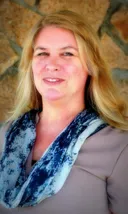Five Ways to Retain Top Talent – Onboarding & Beyond

Jörg Schiemann/123RF.com
You’ve spent countless hours planning and collaborating to recruit top talent, and your target has accepted your offer. Is it time to sit back and pop open the good stuff? Before opening up or ordering your favorite beverage, check your onboarding plan. Effective onboarding plans are the blueprint for long term provider retention. More art than science, they must be flexible (where appropriate) and tailored to your new healthcare professional hire (think Bespoke suit). The best onboarding plans are supported by initiatives to create connections between your new hire and the community in which she or he works and possibly lives.
Promise & Deliver - Check Your Customer Service
The Shinkasen Gran Class is a luxury bullet train experience in Japan, with world renowned chefs, hand-hewn wood paneling, and fantastic views from windows straight out of your favorite Bond movie. Hyper-attuned staff await your every command. Onboarding gives you the chance to be like the Shinkasen, with new hire experiences that are flawless and go above and beyond what’s expected. To ratchet up these experiences, answer these questions: 1) Does the new hire understand our organization’s expectations? If the answer is no, what can we do to improve her or his understanding? 2) Can we deliver on what we’ve promised to her or him in the timeframe discussed? 3) Are our expectations for production realistic and attainable? If you answer no to these questions, you’ve missed the mark on customer service 101. If mergers or acquisitions are pending that will impact your new hires, don’t let them be the last to know. Explain changes in a way that includes and utilizes input from the new provider. Most importantly, keep your promises to build organizational loyalty.
Finding the Communication Balance – Huddles, Hands-off and More
How frequently will you meet with your new provider to assess progress around metrics to reward success? The best onboarding plan includes both frequency of huddles or check-ins and staff involved. Be mindful of the needs of those new to healthcare careers versus seasoned providers but know that there are no hard and fast rules around this either. Your experienced docs may desire more handholding as they onboard, while your doc fresh out of residency or fellowship may prefer a more hands-off approach. Your onboarding plan should include a schedule for meaningful check-ins to assess progress with your new hires and to take the temperature of how things are going. This takes out the guesswork, holds everyone accountable, and allows for your new hire to gain a sense of comfort with all expectations. An added benefit: you will learn of operational and other challenges around patient care and staffing early and in time to help build solutions.
What about C-suite visits to new healthcare professionals in the field? Some CEOs will want to drop by for unscheduled visits and others may manage through infrequent contact and email (note I didn’t say lead.) Clinicians who feel supported by administration while maintaining some autonomy and clinical discretion are more likely to be retained in the long run. It’s delicate, but helping your CEO find a balanced approach to visits can help support your new hire’s path for success.
Forget the Gimmicks and Get Real
Gimmicks like taking turns plastering the boss with pie do nothing to foster retention. DO help coordinate clinical professional dinners out. Even the sharpest nurse may feel a little shy when it comes to building new relationships in the community. Connect new hires and their families with like-minded others to build important bonds. Set up informal mentorships to foster new hire community engagement. This helps a busy hiree and/or family when navigating new jobs, schools, and social activities. Ensure that your new provider is aware of your organizational and any local health specialty social media for which she or he would be a fit. This is particularly important for healthcare professionals placed in more isolated communities with limited IRL interaction with their colleagues and peers. The right Facebook and LinkedIn groups can help new hirees develop a sense of community and connect them with peers who may start out as colleagues and develop into important support networks.
Be Creative
Ensure the perks you offer separate you from others and that they add value for your new hires. Query your clinical staff to see if there are low-cost options that appeal to them. Adjusting shift lengths or schedules to accommodate family time or other additional leave requests (within hospital, practice, or regulatory guidelines) are tangible benefits to help prevent provider burnout. It’s critical to personalize new hirees’ experiences so that they feel their talents uniquely match their new roles. This personalization is important but going outside the new hire’s onboarding plan can also help build retention. Some hospital systems offer concierge services for their medical staff. This perk allows busy healthcare professionals to access family health care with ease and avoid time off to attend to general medical care. Reducing those absences will increase your concierge medicine ROI. Concierge medicine programs include deep planning/development, staffing, extra costs, and regulatory considerations, but may be worth exploring.
Work Your Community Partnerships
Check in with local merchants to identify partnership opportunities for reduced costs for goods, services, or subscriptions for hospital or practice employees. Local brick and mortar vendors love group plans or subscriptions because foot traffic equals a better bottom line. This is especially true for rural businesses; their success often relies on in-person sales and services. Connecting new hires with goods and services they want and need brings a sense of community. Look to those that provide unique farm to table or similar experiences to highlight your community’s culinary sensibility.
Part of retaining new healthcare professionals includes fostering a sense of security and loyalty to your hospital or practice. Act as the connector between new hires and the community - this is critical to creating relationships that will help support top talent retention. Provider retention is also about the tangible and intangible experiences you provide, so be creative and always seek feedback from the experts on retention – your newly hired healthcare professionals.
Read also:
Onboarding in Healthcare: Creating Connections that Last
Healthcare’s Challenging Relationship Between Onboarding and Employee Retention
Related Posts
